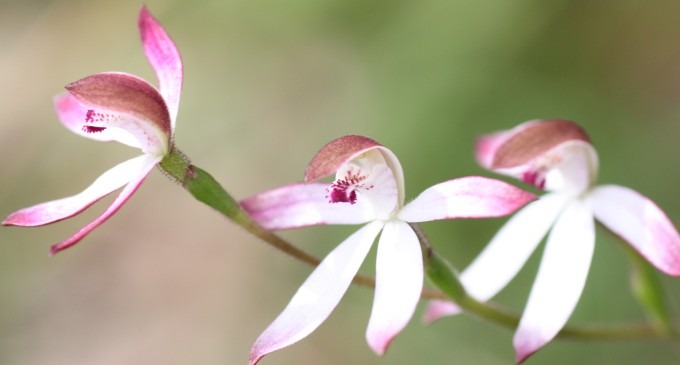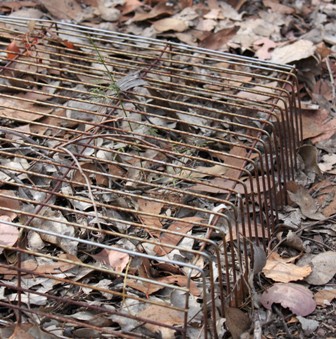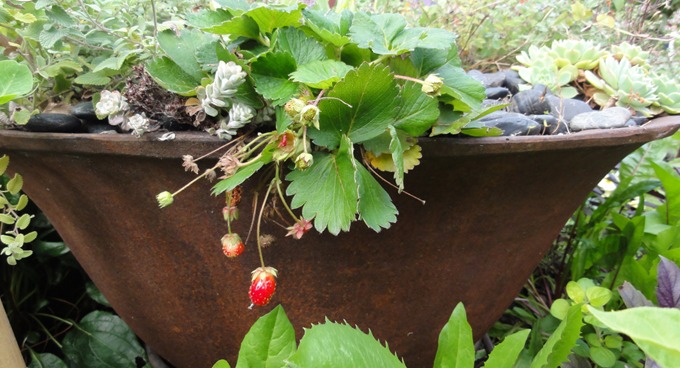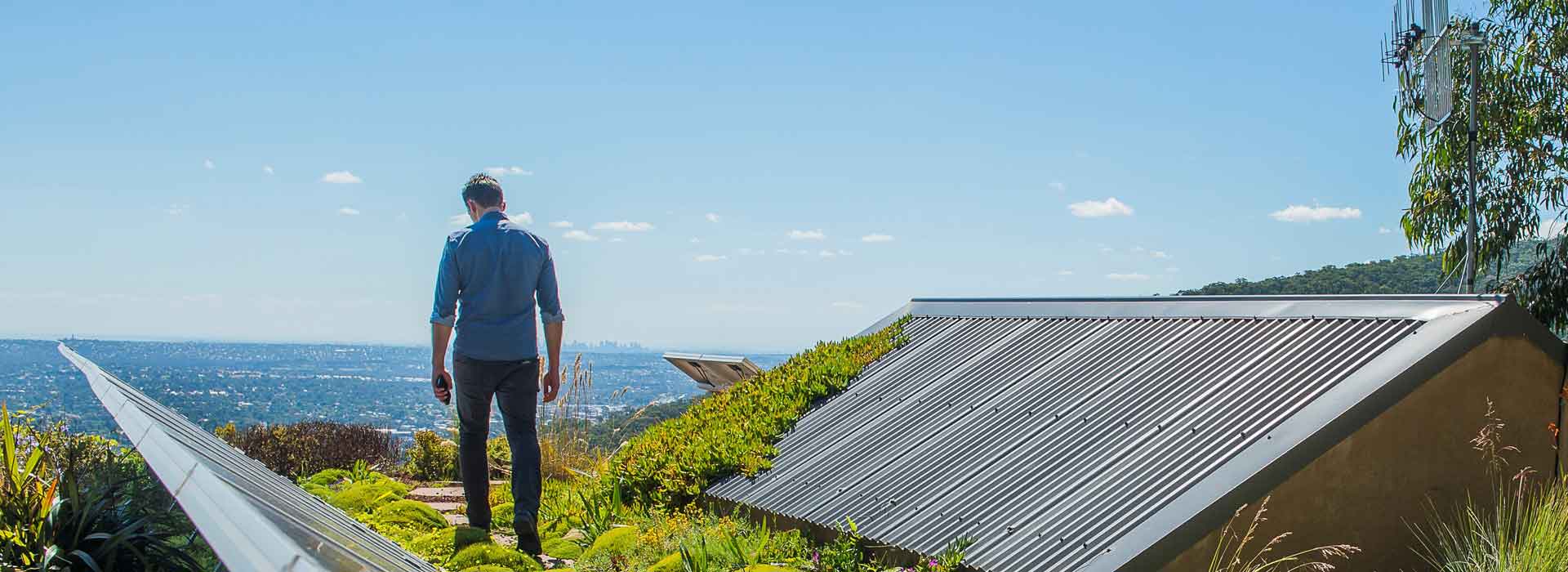Native Orchids
Orchids are one of my favourite plants and one of the many reasons why I live on a forested property north of Melbourne. The area is a recognised hotspot for many native orchids, including the highly endangered Rosella Spider Orchid (Caladenia rosella).
Rosella Spider Orchids start emerging on my block around July each year alongside the Nodding Greenhood Orchids (Pterostylis nutans). September and October is the high season when neighbours start looking at you sideways asking quietly, “Have your Caladenias come out yet?” By December, orchid season has almost past, but for the grand finale the amazing Pink Hyacinth Orchid (Dipodium roseum) emerges from the ground like some alien pod and completely steals the show.
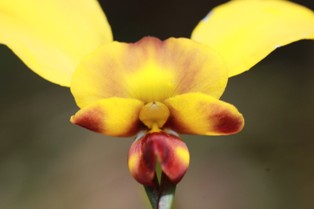
grow on trees). The more tropical, wetter regions of Australia are favoured by the epiphytes while the terrestrials are generally found in the drier more fire-prone southern regions.
Where I live we have terrestrial orchids that are deciduous and diedown to a dormant underground tuber, generally in summer. With the rarer species we need to cover them with wire netting to protect the tubers from kangaroos and birds such as the Chough who love to dig them up and have a feed.
Many terrestrial orchids have tiny seeds with no significant food stored inside. Instead they rely on a fascinating relationship with mycorrhizal fungi that assist in seedling development once germination has occurred. These fungi attach themselves to the orchids’roots and as the fungi harvest nutrients from the soil they generously allow the orchid to share in the bounty. Some orchids rely on mycorrhizal fungi only to aid early growth but many, at least to some extent, rely on these fungi throughout their lives.
Most orchids also have a specialist relationship with specific insect pollinators and will go to great lengths to attract the appropriate gnat, hoverfly, bee etc.
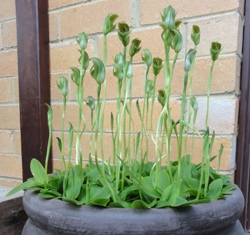
Sustainable gardeners can contribute to the health and survival of native orchids by avoiding the use of chemicals that may kill insect pollinators; by only taking photographs rather than illegally harvesting native orchids from the wild; and by growing some localised species such as greenhoods in their garden.
For detailed information on these beautiful and fascinating plants visit the Australian Native Orchid Society at www.anos.org.au
Container Planting
There are a huge variety of containers available from expensive designer pots to recycled tin cans. What you choose comes down to budget, space availability and 'the look' you want for your garden. Read on for everything you need to know about growing in pots, raised beds and hanging baskets.
Considerations
The Container
You need to take into account the following factors when choosing a container;
- drainage: ensure your containers have good drainage with adequate holes in the base.
- size: make sure the plant roots have enough space to grow and repot into a larger pot when the roots appear to be out growing the container.
- porosity: some materials e.g. terracotta will draw water from the soil so will need to be watered more frequently than a glazed pot
- weight: think about where the container is going and if it will need to be moved about... pot + plant + soil = bad back! Wheeled pots are available to avoid too much heavy lifting.
- buy local: If you are buying new pots, try to buy locally made pots whenever possible as they have a lower environmental impact.
Potting Mix
Growing in containers and raised beds has the advantage that you get to bring in fabulous organic potting mix. Avoid garden soil as it tends to break down quickly in pots and lead to drainage problems. Potting mixes need to be topped up periodically, usually in spring. You can lift and repot or simply top dress the existing mix.
Mulch
On top of your containers will reduce evaporation and add nutrients to you mix. The type of mulch will vary depending on the plants e.g. a straw-based mulch for vegies, mixed sized woodchips for other plants
Fertiliser
Container plants require regular applications of fertiliser over time as plants constantly take up nutrients. There are many fertilisers to choose from and produce plants have different needs than flowering plants.
Over-watering
Make sure you know the moisture requirements of your plants and follow them. Before you water check the soil moisture by putting your finger in the soil up to the second knuckle. If the soil on your fingertip feels dry, water your plant. If you do over-water the leaves may turn yellow and fall off or your plant may go limp. If your soil is too wet move the container to a sunny spot until it dries out.
Under-watering
In summer you may need to water your container plants every day, particularly if they are small containers or hanging baskets with less soil to hold moisture. Make sure you give your plants a good soak so that water is coming out of the bottom of your pot. If your plant does dry out they may be revived with a soak in a bucket of water.
Plants
You can plant virtually anything in a container. The important considerations are to:
- grow a plant in the right sized container for its roots and height
- ensure your have the right plant in the right place e.g. Sun loving plants in full sun areas
- check your plants regularly for pests and diseases
- group plants that require similar levels of watering together.
Planning
Containers look best when they’re grouped together, with pots of all different shapes and sizes closely clustered. To create a sense of space and depth select pots of different sizes and group them from smallest pot size at the front to larger pot size at the back.
Courtyard Gardening
A courtyard garden can be a private retreat created to relax with family, entertain with friends and to garden with pleasure. Courtyard gardens are small spaces, so be careful to avoid including too many plants that can grow to create an impenetrable jungle or summertime sauna!
Considerations
1. Drainage: poor drainage and flooding can be problems with courtyards that are predominantly hard landscaped areas. In this case alleviate the problem by using containers for plantings.
2. Shade: high walls and adjoining buildings can restrict the amount of sunlight reaching your courtyard. If this is an issue, select shade tolerant plants or use pots on wheels that can be moved about easily.
3. Heat: paved courtyards with poor ventilation may result in heat build up. Plants will help to cool the area but their water requirements will be high so install an efficient watering system.
4. Shallow Soil: If soil depth is less than 500mm before reaching clay, then build up garden beds to avoid plants literally drowning in the soil. Do not dig into or plant in heavy clay as your plants will not survive.
5. Space: limited space should not inhibit your ability to design well. Remember to use your vertical (upright) spaces as well as your horizontal spaces. You can use columnar or standard plant varieties along paths; espaliered fruit trees on a wall; a scented creeper on a trellis; strawberries in hanging baskets; or position small potted plants on the steps of an old ladder.
Balcony Gardening
A balcony provides a wonderful opportunity to create a beautiful and productive green space. It is perfect for green thumbs with limited time to garden. Typically balcony gardens are planted out with pots and free standing raised beds.
Considerations
1. Weight: it is important to determine how much weight your balcony can hold. Remember to factor in that containers get even heavier when you water them.
 2. Space: make the most of it but don’t get so carried away with pot plants and a worm farm that you have no where to sit and enjoy them. Remember the option of going vertical: hanging baskets, planter boxes, tiered shelving and window boxes can all be utilised.
2. Space: make the most of it but don’t get so carried away with pot plants and a worm farm that you have no where to sit and enjoy them. Remember the option of going vertical: hanging baskets, planter boxes, tiered shelving and window boxes can all be utilised.
3. Light/shade: select plants that will grow in the conditions of your balcony. If you have a south facing balcony you will struggle to grow plants that need full sun. Better to select shade tolerant plants. Most plant labels will indicate the sun/shade preference of a plant.
4. Wind: balconies can be subject to strong winds that can dehydrate foliage and topple over any top-heavy pots. Select wind tolerant plants that don’t grow too tall and avoid light plastic pots. Attractive screens of matting can also be attached to balcony railing to reduce wind exposure.
5. Water: potted plants dry out very quickly so consider self-watering pots that have their own water reservoir.
This is particularly important when you intend to go away for a couple of days or in hot weather. For standard pots, make sure excess water runoff is collected in pot saucers.
6. Neighbours: prevent water from cascading down to your neighbours’ balcony below every time you water. And make sure your pots don’t become missiles by appropriately securing them to your balcony.
7. Owners Corporations: check to see if your Owners Corporation has any specific rules relating to what you can put on your balcony.
Rooftop Gardening
Access to an inner city rooftop provides a great opportunity to establish a garden haven to relax, to entertain or to grow produce. Typically rooftop gardens are set up in containers and raised beds.
Considerations
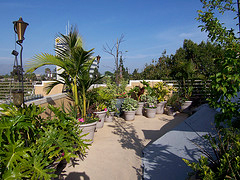 1. Safety: you need to know the load bearing capacity of your roof to ensure that containers filled with soil, plants, water and mulch can be supported by your rooftop.
1. Safety: you need to know the load bearing capacity of your roof to ensure that containers filled with soil, plants, water and mulch can be supported by your rooftop.
2. Sun: rooftop gardens can get very hot in the day and tend to hold onto this heat overnight. So silver-leafed, drought tolerant plants are generally recommended.
3. Shade: many rooftop gardens are heavily shaded by surrounding buildings so large-leafed, shade tolerant plants will perform best under these conditions.
4. Water access: most rooftop gardens need watering at least once a day in summer so you need to consider the practicality of hand watering or the convenience of a timed irrigation system. During periods of higher rainfall, drainage also needs to be considered
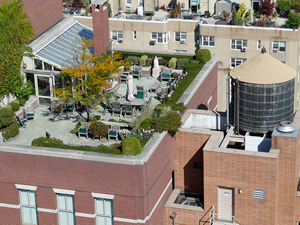 5. Wind: your rooftop garden will probably be unsheltered and exposed to high winds. So use heavy pots otherwise your plants will topple over in every strong gust.
5. Wind: your rooftop garden will probably be unsheltered and exposed to high winds. So use heavy pots otherwise your plants will topple over in every strong gust.
6. Plants: consider plants that come from open windswept areas when looking for ideas of what will grow on your area.
7. Owners Corporation: if applicable, check in with your Owners Corporation to make sure you are within their guidelines for establishing a rooftop garden.
Photographs from Flickr
Pic 1 by Jodimarr
Pic 2 by Naypinya
Research Primary Rocks!

In 2011 SGA worked with Research Primary School to establish an organic waste system in the school and a fantastic vegie garden. We set up a system of worm farms and industrial bokashi bins while teachers and students established a system for all the organic waste in the school to be collected and composted. Students measure the amount of waste they collect and hence their reduction in greenhouse gas emissions. Worm wee and bokashi liquid is collected from the system and used as fertiliser on the garden. The students use a hothouse to propagate heritage seeds to plant out their vegie patch with seedlings. And of course all the very best of sustainable gardening practices from organic pest control to mulching and efficient water application are utilised.


